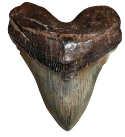Even though the Lords Proprietors’ concept for a hereditary feudal aristocracy did not seem to encourage the growth of a Caribbean-style plantation culture, the topography and initial settlers soon combined to cast the Cooper River region in this mold. Samuel Stoney, in his landmark study Plantations of the Carolina Low Country, observed, “The great plantation age of the Low Country began with the conception of the idea for Carolina in the mind of a Barbadian planter, as a land for planters and plantations.”
Another early figure, Sir Nathaniel Johnson, is buried at Silk Hope Plantation. Johnson, governor of Carolina 1702-1709, received a Proprietary grant of 1,940 acres in 1696 and added to his holdings through several warrants for land, eventually amassing over 5,000 acres, including Silk Hope Plantation.9 During Johnson’s administration, the "High Church" party of the Anglican Church began to consolidate its power, undermining the rule of the proprietors and diminishing the cooperative nature of earlier religious cooperation. He became responsible also for the construction of Anglican churches, particularly the building originally at Pompion Hill.1
Adjoining Silk Hope property, a tract of 2,000 acres was rendered to John Ashby, “of the family of Quenby in the County of Leicester”. Ashby, a London merchant, and his son, also named John, eventually amassed over 5,000 acres along the southern portion of the East Branch of the Cooper River on which now sits Quinby Plantation.11 By 1816, Quinby passed to the Ball family, perhaps the most prominent family associated with the great Cooper River plantations.
The intermarried clans of Balls and Harlestons owed their presence on the river to the good fortune of the first mate of the Carolina, John Coming, who acquired Comingtee Plantation and other Cooper River holdings, in addition to much of the present Charleston peninsula. Through his widow Affra, his estates were devised to his wife’s Harleston nephew and the son of his own half-brother, Elias Ball.
In addition to these large land grants and immigrant headrights, warrants for land were acquired by settlers in the first forty years of the province through application to the Governor and Council. With the changes in the system by the proprietors, in 1682, a lengthy indenture was required with annual payment of a quitrent. A warrant for land was recorded by the Secretary of the Province and issued to the applicant. Later, the Surveyor General produced a certified plat of the land requested. This system became more and more complex between 1672 and 1711, often resulting in ownership disputes and land fraud. By the 1730s, in part due to the rapid increase in population, registration of all land titles was required. The Land Act of 1731, providing for systematic registration and secure land titles, had “a profound impact on the colony’s economic growth.” Nearly one million acres were registered in the province between 1731 and 1738.
Benjamin Simons, a French Huguenot immigrant, acquired his first warrant for land in 1697 for 100 acres “in Barkley County." His plantation house at Middleburg, completed shortly thereafter, is the oldest surviving plantation house in South Carolina. Simons added to this tract in 1704 and was one of the many French Huguenots to eventually settle in the area on the south of the East Branch near the area known as Orange Quarter or French Quarter. His descendants also added to the initial tract until it measured 2,592 acres by 1796.
Historic Resources of the Cooper River, ca. 1670-ca. 1950
Name of Multiple Property Listing Berkeley County, South Carolina
United States Department of the Interior
National Park Service
National Register of Historic Places
Continuation Sheet
Historic Resources of the Cooper River, ca. 1670-ca. 1950
Land Grants
Simply the Best In Blackwater Diving
COOPER RIVER DIVE CHARTERS
The Culpeper Map of 1671 shows the location of Charles Towne (Cheves 1897: frontispiece).
Historic Resources of the Cooper River, ca. 1670-ca. 1950
United States Department of the Interior
National Park Service
National Register of Historic Places
Simply the Best In Blackwater Diving
Copyright 2020
Cooper River Dive Charters
260 Amy Drive
Goose Creek, SC 29445
843-296-3344






